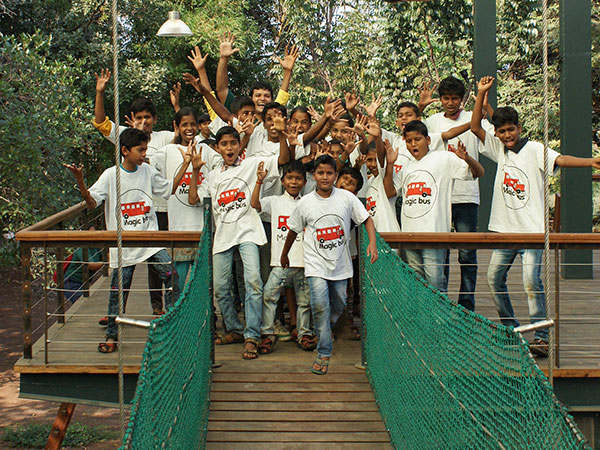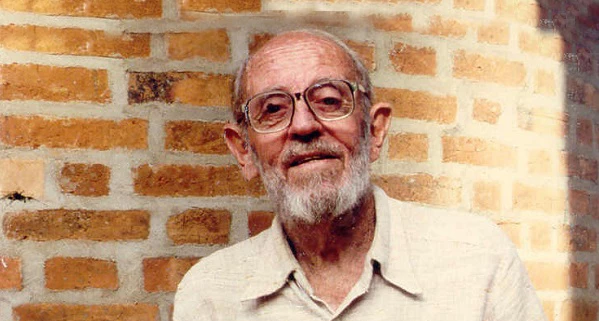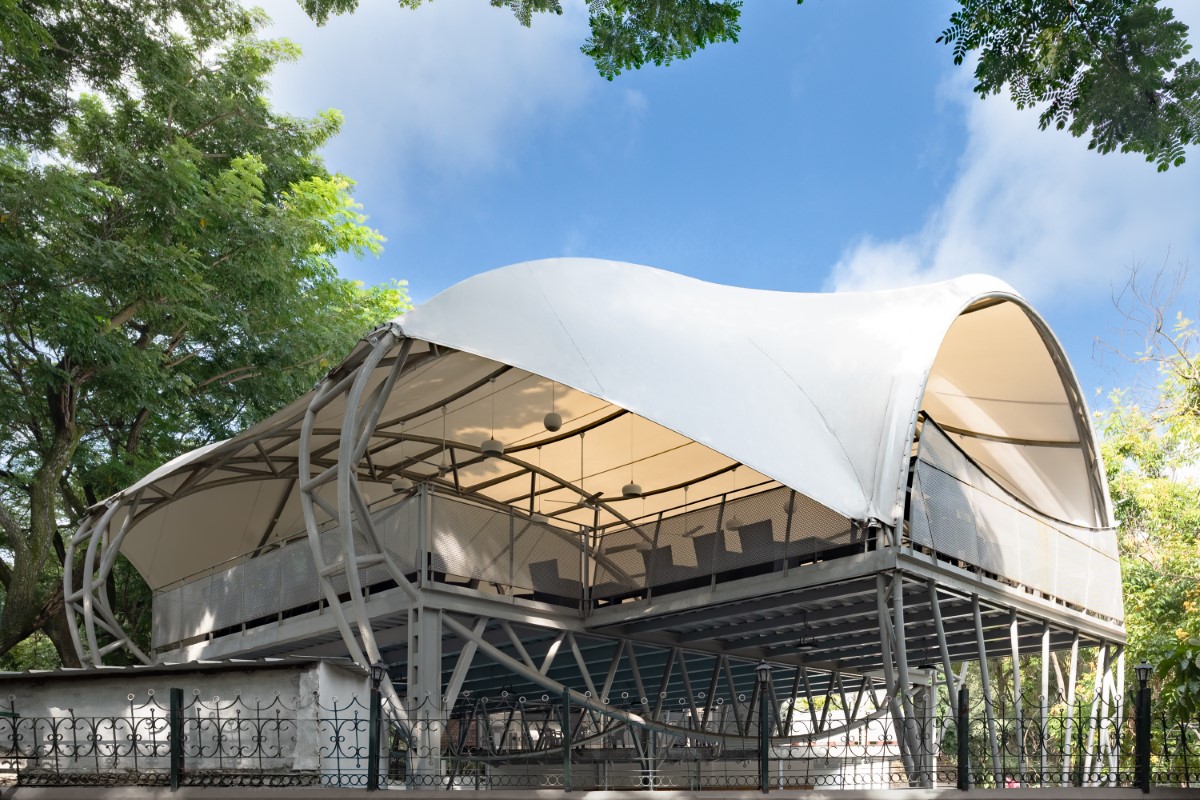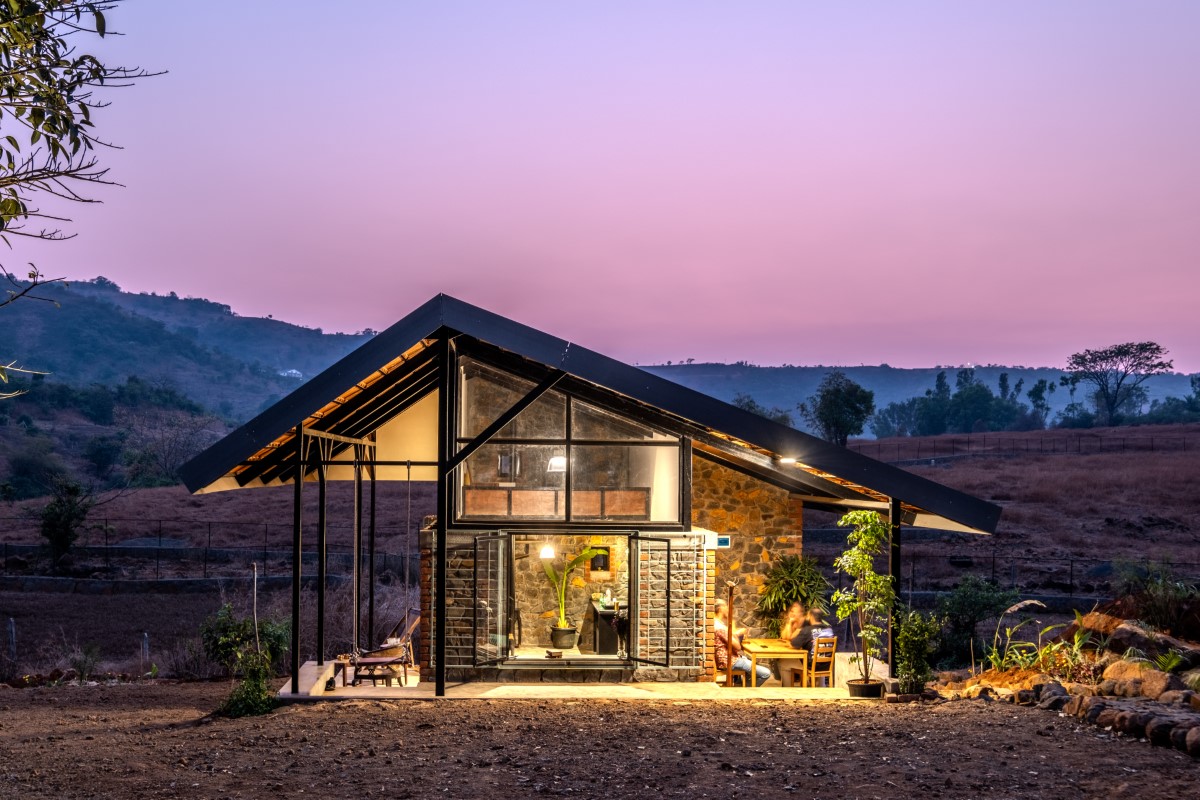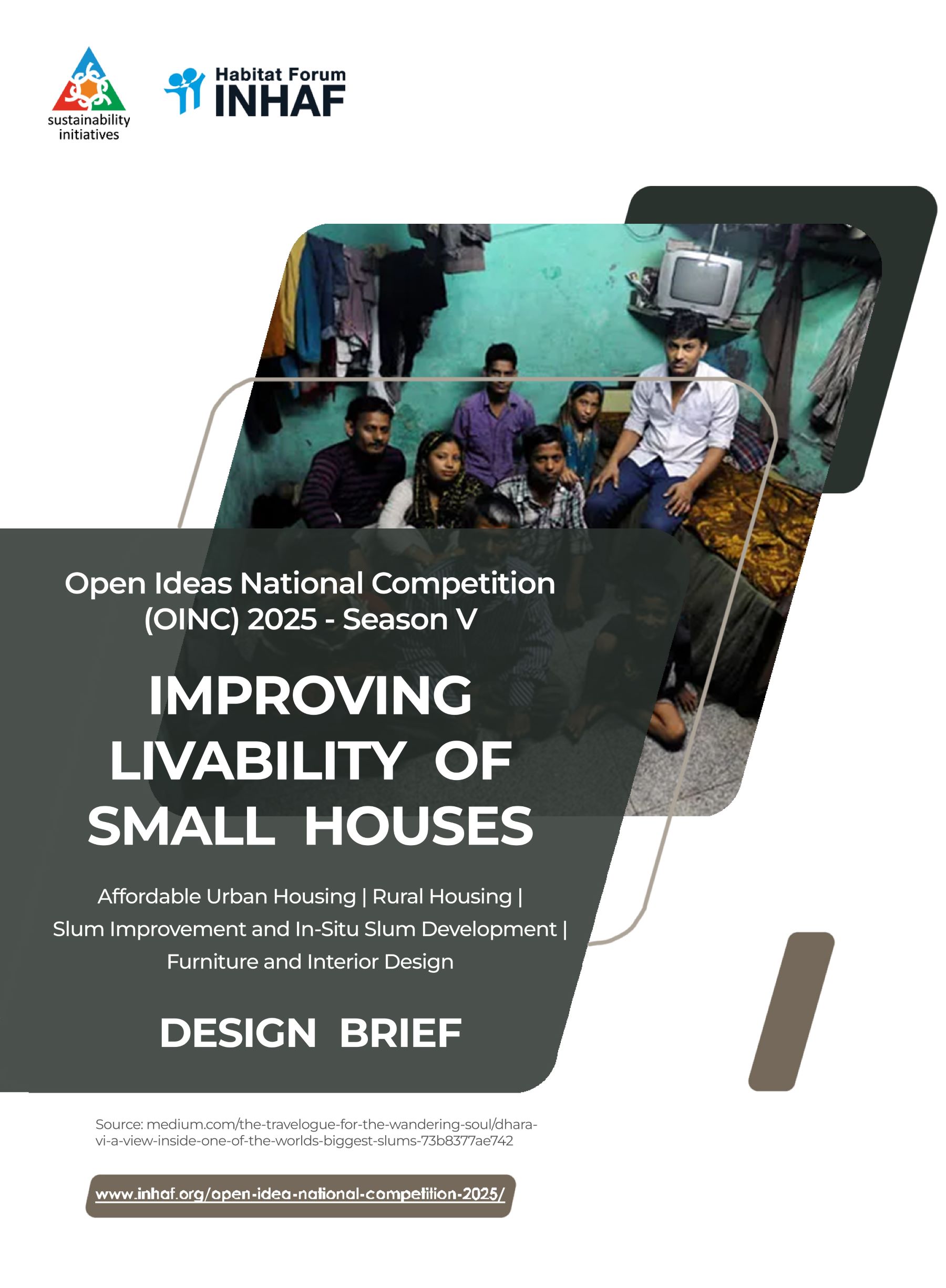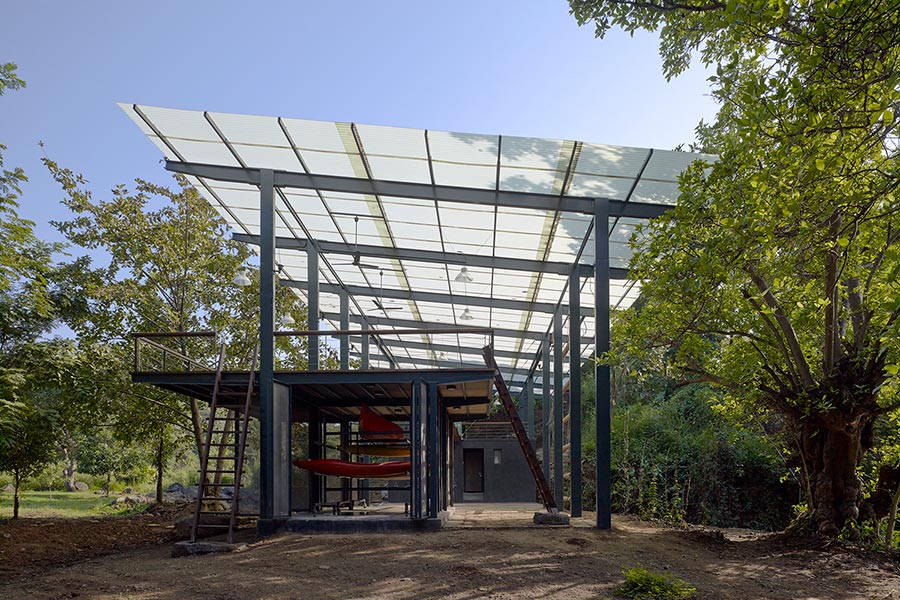
Partly a building, partly a challenge course, the Laureus Foundation sponsored Learning Pavilion is an interactive building used as a gathering space and play area for Mumbai’s underprivileged children. The pavilion, designed by Architecture BRIO is located on the Magic Bus Centre for Experiential Learning, situated near Mumbai at the foot of the Western Ghats. Magic Bus is an NGO which seeks to educate and mentor children through outdoor “experiential” learning.
 Learning Pavillion at Magic Bus Campus
Learning Pavillion at Magic Bus CampusThe landscape of the Magic Bus Centre is in stark contrast to the daily living environment of most of Mumbai’s children. While in space-starved Mumbai, outdoor play areas are hard to get by, the Centre is blessed with a unique variety of diverse terrains to be experienced by the children; rivers, woods, nature trails, camping grounds, and expansive green lawns for soccer. All of which is intended to promote the NGO’s concept of “learning by doing”. Realizing that children in the city are the worst affected by the scarcity of space, Matthew Space founded Magic Bus in 1999. On weekends and evenings he began inviting street kids living at the bus stand across from his office to hop the fence so he could coach them in rugby. Within a few months of his coaching and mentoring, these boys learned discipline, improved self-esteem, hygiene, and understood the importance of respecting team members and opponents in a healthy competitive environment. For many children burdened by the demands of poverty, the sport sessions provided an opportunity to express themselves, release their pent-up energy and be a part of the larger community.
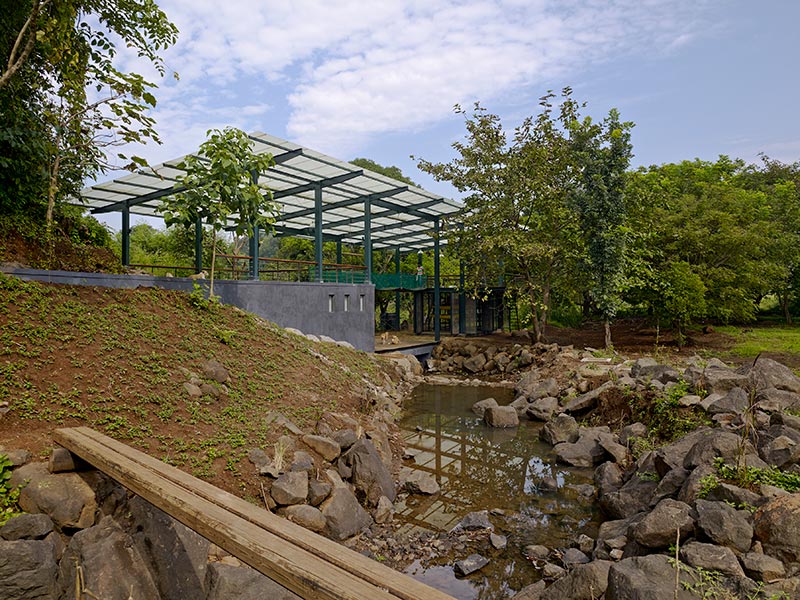
After undertaking successful trips taking groups of kids on weekend camps in the valleys and mountains surrounding Mumbai, the idea of a permanent outdoor campus outside of the city was born. The first Phase of this project comprising of children’s dormitories, a dining pavilion, volunteers accommodation and a resources centre was designed by Rahul Mehrotra Associates. A challenge course with climbing walls, Jacob’s ladders and zip lines completed the first phase. Architecture BRIO was asked to design the second phase of the project, which included proposals for staff accommodation, a facilitation center for corporates and the Laureus Learning Pavilion. While a learning pavilion on an outdoor campus for underprivileged children is a very specific program, the pavilion needs to be able accommodate a wide variety of activities such as team building workshops, games, briefing sessions, group discussions, craft classes, raft building and climbing. Architecture BRIO located the Learning Pavilion on a confluence of four important landscape elements: a seasonal stream turns around a hillock and culminates in a river while flanging an existing soccer field.
These elements are emphasized by strategically placing the various activities of the Learning Pavilion on either side of the banks of the stream. The challenge course on the Magic Bus Centre is extended into the pavilion turning it into an architectural route and binding the landscape, the pavilion, activities and experiences together. Access and circulation to the two decks on the upper floor of the pavilion is provided through the hilled topography as well as wooden climbing ladders.

